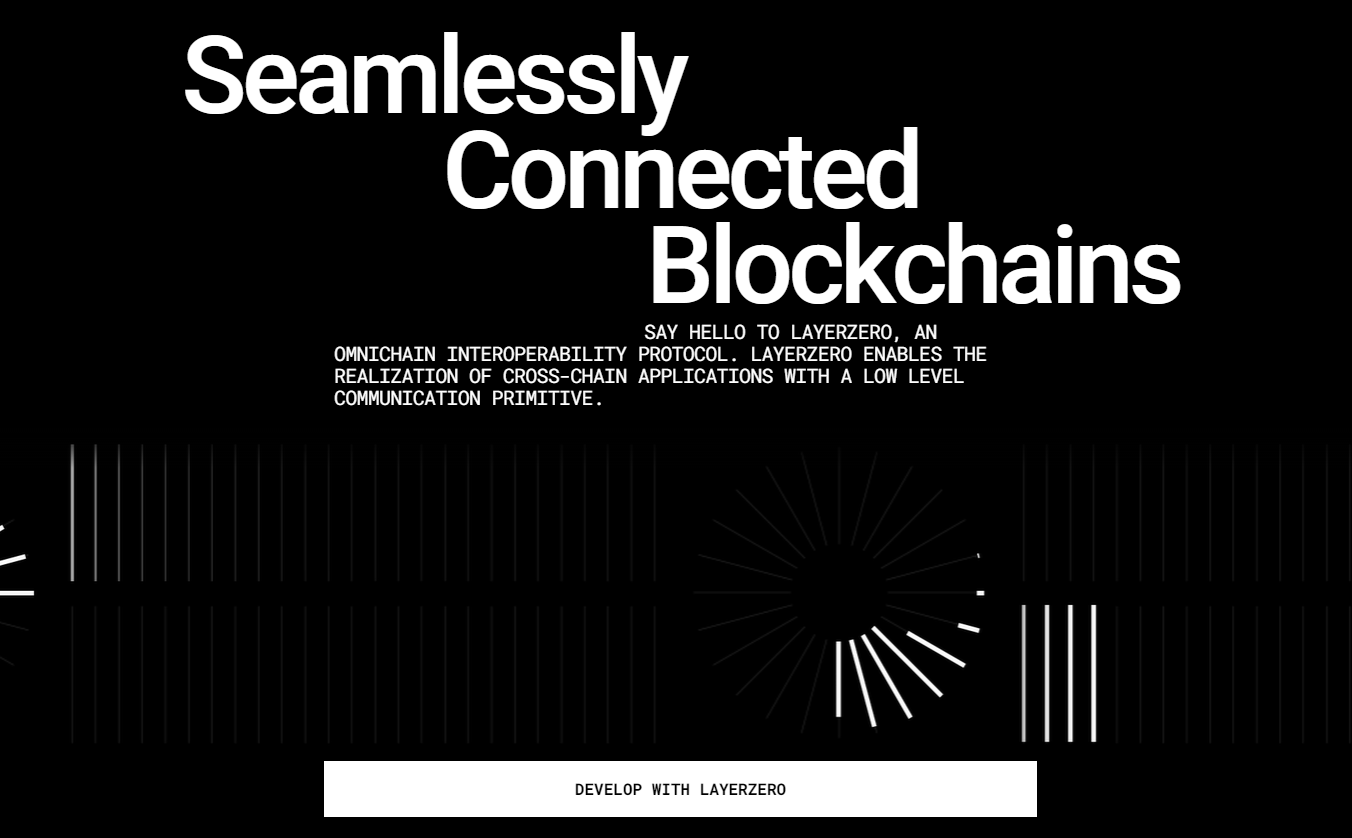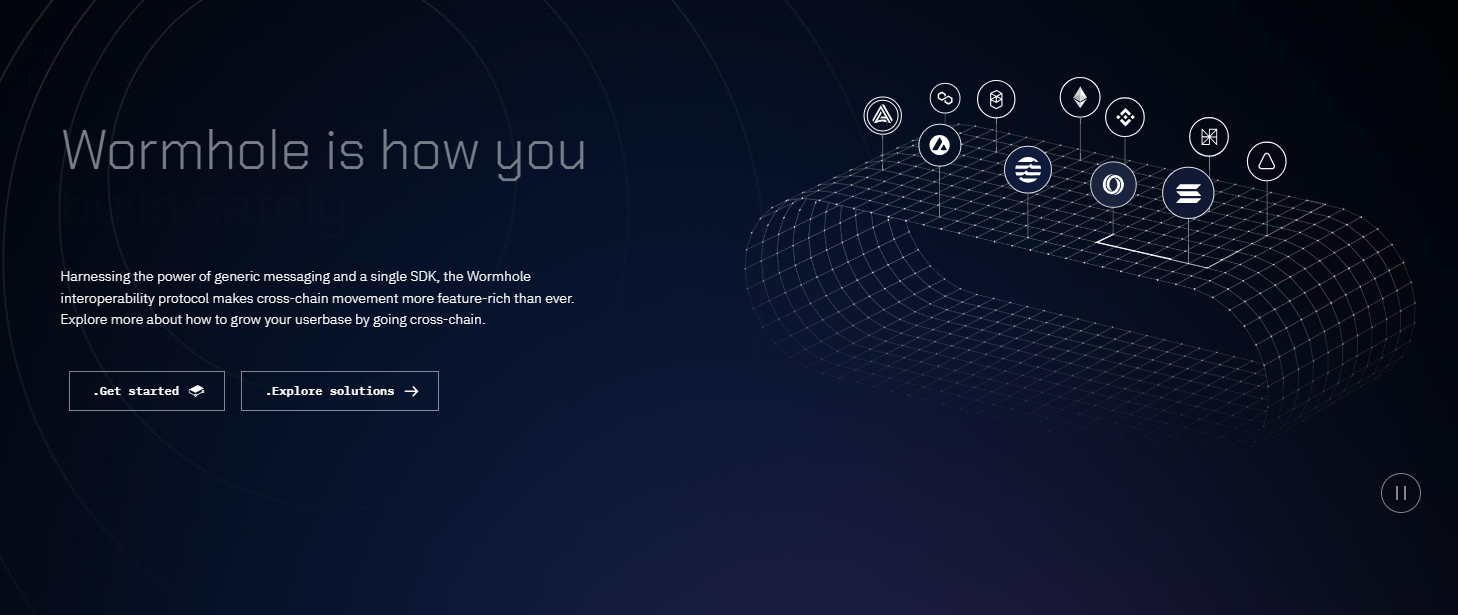Currently, there are quite a few Layer 1 Blockchains operating and developing, and in the future perhaps more Blockchains will be born. But they operate independently and lack connectivity, causing fragmentation and difficulty in moving users’ assets.
This problem is as serious as the fact that all countries in the world are closed and do not interact with outsiders. But fortunately this is not happening, most countries are open to exchange with each other. Thanks to that, countries can freely export or import goods, intelligence, technology, etc. And all people can travel between many countries, creating an equal world.
Just like the real world today, Cross-chain was born to help Blockchains communicate with each other, opening up the circulation of assets, information and users. So what is Cross-chain? How does it work? Let’s find out in this article!
Cross-chain Overview
What is cross-chain?
Cross-chain is a concept that refers to performing transactions or transferring assets between different Blockchains. It allows users to convert or transfer assets from one Blockchain to another without going through any intermediary. Popular Cross-chain solutions today include protocols such as LayerZero, Wormhole,…
This concept is very broad and can include Cross-chain DEXs and Bridges that belong to Cross-chain.
Structure of Cross-chain
Cross-chain is a term in the Blockchain field, used to refer to a communication system between different Blockchains. Cross-chain structure often includes Smart Contracts and Gateways to exchange data and assets between different Blockchains.
These gateways can also be used to convert Crypto types from one Blockchain to another. This implementation process requires coordination between Validators and relevant parties to ensure safety and reliability in transactions across the Blockchain network.
Cross-chain operating mechanism
The operating mechanism of Cross-chain is the connection between different Blockchains through Smart Contracts and Gateways. When there is a transaction between two different Blockchains, the information will be encrypted and transmitted through gateways to convert assets and cryptocurrencies. Gateways use encryption and decryption algorithms to protect data transmission. When transactions are made, information will be updated on the relevant Blockchains.
To ensure the safety and reliability of transactions on Blockchains, authentication processes are performed by Nodes on the network. These Nodes must agree on transaction information on both Blockchains before the conversion process is performed. If the Nodes do not agree, the transaction will not be performed to avoid risks and security vulnerabilities.
An Application Of Cross-chain
Applications of cross-chain in the blockchain field include:
- Mining: Cross-chain allows miners to switch cryptocurrencies between different Blockchains to take advantage of profits from different mining pools.
- Digital Assets: Cross-chain allows users to convert and trade digital assets between different Blockchains. For example, converting Bitcoin to Ethereum or other Tokens.
- Integration between Blockchain platforms: Cross-chain allows different Blockchain networks to communicate and interact with each other to create more complex Blockchain applications.
- Risk management: Cross-chain allows users to minimize risks when transacting on the Blockchain network by using many different Blockchains to spread the risk across many different networks.
- DeFi: Cross-chain allows DeFi services on the Blockchain network to interoperate with each other to create a more complex decentralized financial ecosystem.
Advantages And Disadvantages Of Cross-chain
Advantage
- Compatibility between different Blockchains: Cross-chain allows different Blockchains to work with each other effectively, opening up opportunities for more complex applications, overcoming the limitations of a single Blockchain.
- Increased safety and security: Interactions between Blockchains often need better control and security to avoid risks and security vulnerabilities. Cross-chain provides security and control mechanisms that increase trust and safety for users.
- Increased scalability: Cross-chain allows Blockchains to scale and handle larger transaction volumes using cross-platform solutions.
- Reduced costs and transaction times: Cross-chain helps reduce costs and transaction times by allowing exchanges between Blockchains more quickly and efficiently.
Defect
- Complexity in implementation: Integrating different Blockchains and providing compatibility can require large investments in research, development and deployment.
- Compatibility between Blockchains: Compatibility between different Blockchains is still under development, sometimes encountering technical problems and disagreements within the blockchain.
- Difficulty in detecting and resolving errors: Because Cross-chain interacts with many different Blockchains, detecting and resolving errors can present some challenges.
- Potential security-related risks: Cross-chain can create security leaks and vulnerabilities, if appropriate security measures are not put in place.
Some Outstanding Cross-chain Projects
LayerZero

LayerZero overview
LayerZero is a multi-chain interoperability protocol that allows dApps to be built on multiple Blockchains efficiently. LayerZero connects dApps across chains using on-chain Ultra Light Nodes, helping achieve the security of a Light Node at the low cost of an intermediary chain.
Using this protocol, developers can turn their dApps into multi-chain applications using a simple interface.
Basically, LayerZero can be understood as a layer connecting separate Chains on the Blockchain. By attaching Endpoints to networks that retrieve and transmit information back and forth between Chains. However, Endpoints do not store data but the data will be transferred to the Relayer for Off-chain authentication. And Endpoints is just like a super lightweight client that is installed on networks.
The way LayerZero interacts with multiple chains is to send messages across Chains thanks to the Endpoints link. Unlike other bridges that use Mint and Burn mechanisms. High risk when locking assets on Smart Contracts. With LayerZero, the Tokens used by users are all Native Tokens. It is an optimization for bridge technology.
Advantages and disadvantages
Advantage
- Cross-chain: Helps interaction between Blockchains.
- Application for building multiple highly complex Cross-chain dApps in DeFi.
- High security when using 2 authentication layers: Relayer and Oracle.
- The connection points to the Blockchain are called Endpoints, it is very light and does not contain data.
- Blockchains are easy to integrate to interact with other chains.
Defect
- Relayer is not truly decentralized.
- Many projects like LayerZero are being developed so competition is very high.
- Payment of fees with any Token is not yet supported.
- Speed is still limited.
Wormhole

Overview of Wormholes
Wormhole is a Cross-chain protocol that connects Blockchains together, allowing the easy exchange of tokens and assets between Blockchains. This protocol was developed by Wormhole Labs corporation. Wormhole uses a special type of token (can be understood as a Wrap version of the original Token) to perform Token conversion between Blockchains.
Wormhole provides a toolkit that enables the development of Cross-chain applications, including support for Smart Contract development, application programming interfaces (APIs), and other products. In addition, Wormhole also provides security features to ensure safety and reliability during the Token conversion process across Blockchains.
Wormhole is in development and in testing, so it takes time to evaluate its effectiveness and reliability. However, this is a promising application that allows for increased interoperability between Blockchains, opening up the potential for the development of more complex dApps and products on the Blockchain platform.
Advantages and disadvantages
Advantage
- Cross-chain: Wormhole is a Cross-chain technology capable of connecting different Blockchains together, allowing the exchange of Tokens and assets between blockchains easily.
- Easy to use: Converting Tokens between Blockchains through Wormhole is very easy and convenient for users.
- Security and reliability: Wormhole uses advanced security features such as Proof-of-Stake to ensure safety and reliability in transferring Tokens between Blockchains.
- Scalability: Wormhole provides a set of tools that enable the development of Cross-chain applications, allowing for scalability and development of more complex dapps and products on the Blockchain platform.
- Support for many Blockchains: Wormhole has the ability to support many different Blockchains, ensuring compatibility with other Blockchain systems in the community.
Defect
- Security: Creating new Tokens on Wormhole can cause security issues.
- Scalability: Wormhole allows the creation of free Tokens on its platform, but the development of applications for these Tokens and the distribution process to different platforms may be limited.
- Standards: Wormhole does not have a common standard for new Tokens created on its platform. This makes development and interaction between different applications on Wormhole difficult and inconvenient.
- Dependency on Blockchain: As part of Blockchain, Wormhole will depend on Blockchain infrastructure to operate. This can limit Wormhole development if the various characteristics of the Blockchain do not suit the requirements of the platform.
Personal Projection
Cross-chain is one of the extremely important areas for the development of Blockchain and Crypto. In the future, Crosschain may continue to grow strongly, but projects in this segment must compete a lot to survive and develop.
From a personal perspective, Circle’s Cross-Chain Transfer Protocol and messaging platforms such as LayerZero and Wormhole will provide the best asset transfer service. In the future, when Cross-Chain Transfer Protocol is widely applied, USDC will completely capture the Stablecoin market share in DeFi and then TradeFi.
Summary
However, Cross-chain is still a big concern in Blockchain as their security is not really good. The risk is big but the demand is also very high, so certainly the upcoming stage Cross-chain is still an important area that is focused on development.
So I have clarified what Cross-chain is? Hope this knowledge can help you!


